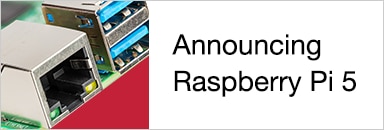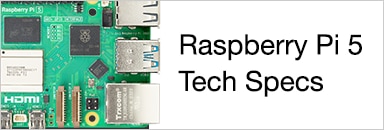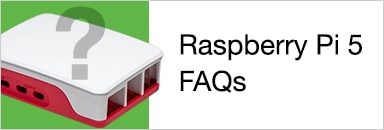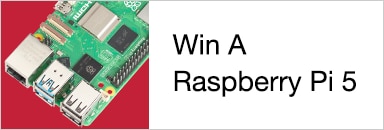So previously, I had wrote a post about my experiences with using the previous versions of the Raspberry Pi as a desktop with multiple version and I enjoyed them as a great addition to using them along side my main PC. Since I was unable to do all the things on previous versions I was hoping to do with the Raspberry Pi I had to settle for just being able to do most things.
Now knowing what was and wasn't working on previous versions of the Raspberry Pi I finally got the opportunity to dive deeper into the Raspberry Pi and to my surprise was able to pull of 99% of my every day tasks from office programs, video editing, audio recording, watching movies and playing games with no issues.
On the Raspberry Pi 4 it was a ton of fun building a nice working database of programs that would run well on it without many issues. At first I thought it was going to be similar to previous version and I was going to find tons of programs crashing and/or just not working at all.
To my surprise things started to run more and more smoothly then I imagined. With tons of new options and programs available that were previously almost working on previous version of the Raspberry Pi I found myself being able to step away from my main PC and concentrate on using the Raspberry Pi 4 as my main Desktop and after a week of use and not turning on my main computer I thought I would start to document my journey and the programs I have used tested and tried and how it all seems to be going.
But if you have not read my previous post about the previous version of the Raspberry Pi as a desktop please feel free to click the link below and check out how things went there and get caught up on my adventure to be able to get rid of my main PC from use on a regular basis.
My time with the pi as a desktop
I will be updating this post here with new sections and updates on my time with the Pi 4 as a desktop so make sure to follow along with me on my journey.
This will be broken into different categories as I write them I will update this article so if it doesn't seem to be complete as of yet don't worry there will be more coming soon enough I just have a ton of things on the go at the current moment.
One thing I didn't do is benchmarks. Well I did them but I am not publishing them because I feel for me the test is in the usage of the pi 4 not in the numbers it spits out on a test. So that is what we are doing here getting real world results not numbers generated by benchmarks.
Pi 4 Desktop Setup:
One of the major things that had to happen was to get the Raspberry Pi 4 booting quicker. So what better way to do this then adding a SSD Drive to the mix. I previously did a video on this as well as a post which you can view the post here: Quick SD to SSD on the pi 4 or watch the video below. I will say the performance increase has been amazing and I wouldn't think about using a SD card again for a Pi Desktop build.
There is another method to installing a ssd as your boot drive which can be found here:
An even simpler way to boot from SSD on Raspberry Pi 4
or watch the video below for more info.
So now that we have have that installed I needed more ports so I added a Insignia 7 port USB 2.0 hub.
After that it was quick and easy to add my Behringer Q502 usb mixer and Logitech 920 webcam.
I should also mention I am using the Raspberry Pi 4 2GB model.
Currently I am only using the speakers built into my ViewSonic monitor but I will be looking for a alternative to be able to add more to the unit for sound quality as its really hard to gauge my video sound and mixing with the current setup. So if you have some options for low powered monitor speakers toss me some options you may have tested or used.
check below to see any fixes to issues I have had so far with usb ssd booting.
Power Consumption:
One of the first deciding factors of me making more of a full time switch to the Raspberry Pi 4 as a full time desktop was power consumption. After running some tests as I did my day to day usage on it I started to see the results come together more and more on the 9th day of my usage of the Raspberry Pi 4. Now I will be running longer tests, because how better to get a better accuracy then by running longer more real life tests on the unit.
So below is a video of my Day 9 results and now with the updated 30 day video below as well with the Pi as a desktop for the power consumption I have also included the slides I used here just in case you prefer to read them versus watching a video about me talking about it for 10 mins. 
For my tests I used the Kuman Plug Power Meter Energy Electricity Usage Monitor Watt Voltage Amps Meter with Digital LCD Display,Overload Protec…
So far this little cheap meter seems to be doing the job and I am not questioning its accuracy as of yet since I have nothing else to compare it to.
Now on to a bit of a slide show on the Power consumption charts.
Now I did notice one thing and I had forgotten to put my power supply for my main pc on the chart as well it's either a 500-550w power supply I will have to double check on that tho. Also to note in my area there is a 2 tier system when it comes to my kWh prices so one tier is at $0.08 center and another at $0.12 cents per kWh. All my calculations are based on $0.10 cents per kWh.
To me that's a pretty substantial difference and the fact that I am able to use my Raspberry Pi 4 for the same tasks I was doing on my main PC it's pretty much a no brainier to me. Even this blog post was done on the pi 4 as well as photo and video editing not one portion was done on my main PC.
So where can we go with these results further? Well like I said I would love to be able to upgrade to the Raspberry Pi 4 4Gb model to start to run longer tests. But also at this point I think its to the point I could probably scrounge up enough solar power items that I have laying around and make this a full time off grid unit with a decent batter bank. But for $13.14 would it be worth it? To me I think it would if you have the equipment available and maybe sitting around doing nothing.
In the past I wanted to make a off grid solar powered workshop which would still to this day be a fun project. With results like that I certainly would feel more comfortable knowing the main computing power isn't really pulling that much energy vs a laptop or a main desktop. Maybe next spring if the wife gives me an allowance I can start a solar powered workshop and put this all to a bigger test.
Before I forget my tests on the previous versions where all done with heavy use for a 3 hour period. The Raspberry Pi 4 lives always on and not always being used if your wondering why the kWh usage is that much lower. Also like I have stated before I would have loved to have run all my previous tests for a lot longer duration to see a more real world usage on it not just a 3 hour heavy usage benchmark. Since I doubt nobody actually uses their raspberry pi as a desktop with heavy usage for 24 hrs a day. So that to me on the previous results are pretty inaccurate in the big picture of using the Raspberry Pi as a desktop.
Programs & Applications:
Here will be more information on all the programs and applications that I use on a current basis. (This section may change from time to time and be updated as I use it more and more) For the most part if its not listed in my testing and you are wondering how a certain program runs on the pi 4 if you see one similar to it on my list chances are it didn't preform as well as the one installed on my desktop. I have had other programs installed this is just my current list I will be updating it as I am looking for some other alternatives to a few.
Also I am not saying all programs on the list installed correctly the first time so if you have any issues with installing any of them post below and I might be able to help out with it.
Installed programs:
recommended software: (pi menu then preferences)
- libreoffice
- minecraft
- mu
- node red
- scratch 3
- sonic pi
- thonny
- vnc viewer
Apt-get programs: (open terminal - ctrl+alt+t)
- apt-get install fritzing
- apt-get install audacity
- apt-get install flowblade
- apt-get install gimp
- apt-get install inkscape
- apt-get install kicad
- apt-get install blender
- apt-get install thunderbird
- apt-get install hexchat
- apt-get install empathy
- apt-get install lmms
- apt-get install cheese
- apt-get install simplescreenrecorder
- apt-get install gnome-screenshot
- apt-get install firefox-esr
manual installs:
- pycharm
- arduino ide
- opengrive (the only paid program google drive sync)
through add/remove programs in preferences:
- recordmydesktop gui
- webcamoid
Now this list will certainly get bigger of applications and programs I know that but this is my starting point and will probably even remove some of the listed as well depending on my usage of them.
When it comes to manual installs if I feel there would be use for the process I make sure to document it so far both the PyCharm and Arduino IDE seem to both be of use to people. I will be doing more and updating as my programs change in time which you will find them either posted here or on my YouTube channel.
Security:
Recently I decided I needed to install some protection on my Raspberry Pi Desktop check out my post on installing LMD and ClamAV & ClamTK here: Raspberry Pi 4 Linux Malware detect & ClamAv install
or feel free to watch the video here
Gaming on the Raspberry Pi 4:
When it comes to gamin on the Raspberry Pi 4 we certainly have tons of options when it comes down to it. You can install something like RetroPie or RecalBox and start emulating your favorite retro games in no time at all. But that's not where I wanted go with this I wanted to be able to use Raspbian as my operating system and game from on it. So all games that I will discuss will be based on that no emulation os systems will be talked about.
All games will be able to be installed via apt-get or ill explain how to install them if they are not.
So the video does have a bit of lag the game does run better then whats being recorded seems to be one of the issues that I was having but I feel I can get it to be more fluent when it comes to recording game play on the pi in future videos.
The list below will be updated from time to time as I play and check out new games. There has been a bunch of games that I have tested and are not working so will probably compile a list of non working ones as well in the near future.
Installed games & Tested working:
Ardentryst - action/RPG sidescoller
install: sudo apt-get install ardentryst
Issues found over my time so far:
With all things there is always issues that will come up so I thought I would document them and fixes if found for them that I come across.
The first was a issue with the audio when installing some games and programs I would get no sound even tho everything looked like it should be working correctly. This was a bit of an annoyance and I really didn't want to wipe my drive and reinstall every time this issue happened.
Raspberry Pi Webcam Freezing Lagging Jittering issue:
Recently I had a issue with my webcam not working so I thought I would dig around and see what I could come up with to fix it. There was tons of ideas and suggestions out there lets have a look at what finally fixed my issue with using my webcam on the raspberry pi 4.
#Open Terminal
Press Ctrl + Alt + t on your keyboard
#install PCI utilities
sudo apt-get install pciutils
#run on every boot
sudo nano /etc/rc.local
#add the command before exit 0
sudo setpci -s 01:00.0 0xD4.B=0x41
#reboot
sudo reboot
ASLA no audio Raspberry Pi 4:
So here is the link to my post about it as well as a video on it. Alsa no audio (glitch) issue Pi 4 fix
USB wireless mouse and keyboard locking up:
Currently the only thing that I find that resolves this is unplugging the USB dongle from the Raspberry Pi and then re-inserting it. Will be looking into this issue a bit more as it is also an annoying issue that happens at the most random times. I have used the USB dongle in the Raspberry Pi as well as my USB hub about a foot and a half away from the raspberry pi but still the issues persist.
-----
update 10/12/19 (No mouse system lockup on firmware/updates upgrade)
So this morning I decided I would update my raspberry pi. seems there was a ton of firmware updates that needed to be installed in the new update so onward and forward I went with the sudo apt-get update && sudo apt-get upgrade at first this was great when it was finished everything was still working fine. Then came the reboot on the system...uhoh no mouse no nothing going on everything was locked up besides the time and my cpu/ram/temp no keyboards or mice would work. I thought well I guess I can start removing one device at a time to see if it would fix the issue and give me some mouse movement back. Well that wasn't the case finally after a few hours of messing around I finally got it going.
What I had done was I inserted my micro sd card into my computer changed the cmdline.txt.bak to its original state as cmline.txt so I could boot off the sd card again. Since I have everything all saved in google drive I really wasn't worried about reinstalling everything but I knew it would take sometime and after a hour of messing around with the pi already I had to follow through and figure out if I could get everything working again.
Micro SD card booted next thing to do was to upgrade the system again this time running sudo apt-get update && sudo apt-get upgrade -y && sudo apt-get dist-upgrade then running reboot on the system to see if this method would give me more positive results and there it was a working system again with all the updates.
On to what I did to fix the boot on the SSD drive.
First thing I did was copied over all the stuff from the /boot folder over to my /media/pi/boot folder for some reason I had to assume something was going on there. next thing I did was I had to change the the cmdline.txt file back to boot from my SSD drive. (I did change the cmdline.txt in both sd and ssd) which changing the cmdline.txt file that I showed in Quick SD to SSD on the pi 4 was easy to do now It was onto the reboot.
Next up was the desktop that I remembered and then there we go everything was working again and the only thing I did once it was back up and running was I re-ran sudo apt-get update && sudo apt-get upgrade -y && sudo apt-get dist-upgrade
And then I wrote this here for you just in case you too have a similar issue with the firmware.
-----
Not so final thought's:
That's right my final thought's are not my final thoughts but just a step in the direction of a summary of what I have learned using the Raspberry Pi 4 as a desktop over the past while here.
Is the Raspberry Pi 4 able to live up to the abuse of using it as a day to day main computer replacement?
Why yes I think it can as we probably all have a few Raspberry Pi's around the house that have seen very little down time. I know I have a few that are going on many year of not even being rebooted at this point.
What has been the biggest change from previous version of the pi vs the pi 4?
Compatibility of programs that now start to either run or run more smoothly and without issues. Running a Pi desktop on previous versions there was always limitations and with the Pi 4 the gap of programs that now run better then ever are an amazing step in the right direction.
Plans for future upgrades?
So far the only two things that are high on my list of upgrades for the Raspberry Pi 4 desktop would be upgrading the Pi 4 to a 4GB model as well as adding better speaker for audio monitoring. Possibly adding another external drive for video and audio backup.
Biggest disappointment so far using the Pi 4 as a desktop?
Well at this point there really hasn't been many the only thing I can really think of that has been disappointing is I thought a few of well known free applications would run better on the Raspberry Pi 4 this time better then previous version but seems that's not the case. For example I tested multiple video editing software finding only 1 that right off the bat worked as it should without much tweaking involved and didn't suffer from massive lag and preview rendering issues.
What updates will be coming to this post?
Well make sure you follow or bookmark this post and check in from time to time you will see new stuff for sure. I have more that I want to add when it comes to photos and video as well as more on all the topics discussed so far keeping them updated as they happen.
Got questions or comments? Post them below for me
And as always have a wonderful day, a wonderful week and I'll see you next time, take care eh!
#Open Terminal Press Ctrl + Alt + t on your keyboard #install PCI utilities sudo apt-get install pciutils #run on every boot sudo nano /etc/rc.local #add the command before exit 0 sudo setpci -s 01:00.0 0xD4.B=0x41 #reboot sudo reboot

















Top Comments